District Plans: your submission guide!
District Plans are really important and pretty dense… wherever you live in Te Upoko o te Ika, Talk Wellington and friends have done the hard yards so you don’t have to – as little as 5 minutes to whack in a good submission!
All the councils of the region are updating their District Plans because the government, by bipartisan agreement, has decreed councils can no longer block developments letting more people live close to more things people like to do. (Yes, as they’ve been doing for ages).
Most of the changes in the Proposed District Plans (PDPs) are to give effect to this, as they’re required to by law. Here’s Porirua City’s, and Wellington City’s (both closing 5pm Monday 12th), Kāpiti Coast District’s (open til 15th), Hutt City’s (open til 20th), Upper Hutt’s (open til 30th – and they call theirs an “Integrated Planning Instrument – i.e. a handy bundle of all the intensification-enabling changes).
We’ve been researching, exploiting some very helpful planners in their home time, and using info from Coalition for More Homes, Generation Zero, and A City for People – links below to their great material.
The following is
- Some encouragement for you to submit,
- What you need for a basic, sound submission that will help your city be better. (Handy for those short on time)
- For those who want to go full nerd or read the background to the minimalist submission, the next section is for you: there’s step by step info, and a worked example. (It’s for Porirua but if you’re in Te Whanganui-a-Tara Wellington, Kāpiti Coast, or Te Awakairangi Lower Hutt, the key issues are the same.)
If you just have 5 minutes, scroll down to the typing cat!
…ok but do I have to submit on this one though?
Yup. Very much.
We hear from reliable sources that the vast majority of submissions coming in so far are from people resisting more density in our towns, basically self-interest in the properties they already own.
Fear-mongering and misunderstanding are contributing to those fears, and the situation in which we find ourselves in (where good people find themselves acting a bit NIMBY) is overwhelmingly the fault of the wider system rather than any submitting individual. But fundamentally, it’s that system we’re trying to fix and better District Plans – along with heaps of other stuff – are essential.
Your submissions contribution is about trying to put a little more weight on the side of the scales for “yes, we want more homes and things to do in places where people want to be, the issues are fixable and aren’t a reason to stop moving forward”.
It’s adding to the collective weight of the “community vibe” councillors receive in the final engagement report. When councillors are deciding what to change and what to leave in the PDP, they’ll want to be seen to be “listening to the community” so that is the direction in which most of the change will happen. If there’s a little bit more variety in people’s views, thanks to folk like you, there’s a decent chance that those changes won’t all be “water it down, dial it back, retreat”.
…but it’s all so really specific and detailed…
Don’t worry, we’ve got the key details covered.
And for those who are eager to address some of the (much) relevant stuff that a District Plan doesn’t cover: that’s where the “other comments” comes in. It’s a good chance to get bigger-picture ideas formally in front of councillors: if there’s a theme in “other comments”, cos enough people are saying a thing, that’ll get airtime in the engagement report.
…but I don’t know enough!
Remember: you’re just a citizen! Nobody in a council is going to do exactly what you say in your submission, it’s part of a big collective summary. You’re allowed to be a bit basic.
Go forth!

I like the kaupapa. I’ve got 5 minutes before my bus arrives / my soup’s done. Tell me what to do.
TL;DR:
Create a new email. (Email is faster; the online forms are always horrific and take more time / don’t optimise well on phones).
Subject line: Proposed District Plan submission
Put these details in the email body as this is required for it to be a valid submission:
- Full name
- Address
- No advantage to be gained in trade [if that’s true – otherwise declare that]
- Whether you want to be heard [ie say a little piece in real time, in a month or so. We’d say if you’re not sure, say Yes and you can always decide not to later – we can help you be awesome!]
Copy/paste whatever you like from the below (bit with the Italic headings – there’s 3 sections) into your email. If you have extra time, tutu the wording to be in your style.
Send it to the consultation address:
Porirua:
dpreview@pcc.govt.nz
Hutt:
district.plan@huttcity.govt.nz
Kāpiti:
district.planning@kapiticoast.govt.nz
Wellington:
PDPsubmissions@wcc.govt.nz
Upper Hutt:
planning@uhcc.govt.nz
SUBMISSION CONTENT SUGGESTIONS:
Medium density residential zones
I support larger walking catchments for intensification around centres and mass transit hubs.
Where building height limits and recession planes and setbacks are mentioned, I want to see these made universally consistent with the Coalition for More Homes’ Alternative MDRS.
Please add a permeability standard, such as that minimum 30-40% of sites should be permeable (incl permeable pavers / gravel etc).
I support the Coalition for More Homes’ Alternative MDRS recommendations for outdoor living space and green space and suggest these are added.
Small-scale commercial activity should be controlled or permitted or restricted discretionary, rather than the proposed discretionary.
The scale of commercial activities that are permitted in these zones should be increased where it’s activities that involve people spending time together, such as daycares.
We need to enable larger, more comprehensive developments in our centres, so I wish to see height limits increased in the 15-minute walking catchments to rail stations.
Shading as a qualifying matter should be reduced from what’s proposed, with a policy for providing popup nearby public realm for development-shaded homes.
High density zone
I wish to see a standard added, requiring that developments adequately accommodate active travel as the building users’ first-best choice for accessing it, with universal accessibility as a non-negotiable.
I want to see the zone more enabling of small-scale public-facing commercial activities.
I support larger walking catchments for intensification around centres and mass transit hubs
Other comments
Traffic and parking effects in the transition: helpful
I wish to see traffic congestion and parking effects viewed as an interim contributor to traffic calming and safer streets, and used tactically as such, not just as a negative effect. The increased density of cars parked in streets, and traffic congestion, can be a helpful contributor to traffic calming and safer streets by slowing down traffic, discouraging rat-running, and adding an extra nudge for those “on the fence” to maybe travel another way for those short trips. This is really important to help shift our habits in the interim, as we all go on the journey to properly-configured streets that support our neighbourhoods – i.e. as councils retrofit streets with proper traffic-calming and placemaking elements that achieve this effect permanently.
Make transport and landuse work in synergy
I wish to see changes to council’s Network Operating Framework, Parking Policies, street maintenance systems and so forth that actively support, and definitely don’t undermine, the better places created by more density done well and proximity to daily amenities.
Universal accessibility, and active and sustainable travel, must be prioritised for access to public transport so that people don’t need to drive to stations, nor traverse inhospitable park-and-rides once they get there.
Resource the teams
Councils’ planning teams and consent enforcement teams are already vastly under-resourced. These need proper resourcing otherwise all this good change won’t be worth the paper it’s written on. I support more rates being used for resourcing these teams vs for maintaining large sections of road seal to a high standard for driving and parking private vehicles.
I also support combined / pooled resources for consenting, design review, and other permitting functions, that mean multiple small councils can enjoy high-calibre people and economies of scale.
Make sure your details are in the email and hit SEND!
GO YOU GOOD THING!
I’ve got time, I wanna go full nerd!
Good onya! Start with your DP’s webpage. (links above)
Go to the map.
> Select Layers – Turn District Plan and other Layers ‘on’ or ‘off’ to show information you want.
> Select Legend – Shows list of information shown including Zones and Overlays etc. Look for “Medium density residential zone” and “high density zone”, and overlays are things like hazards (useful!), wāhi tapu (protect, they’re special), and Significant Natural Areas (ditto).
> Zoom in and out to see more or less of the city
>Search for a property of interest
Now… peruse! The below are some things to steer you, based on the great, basic formula of the Quarter-hour Paradise:
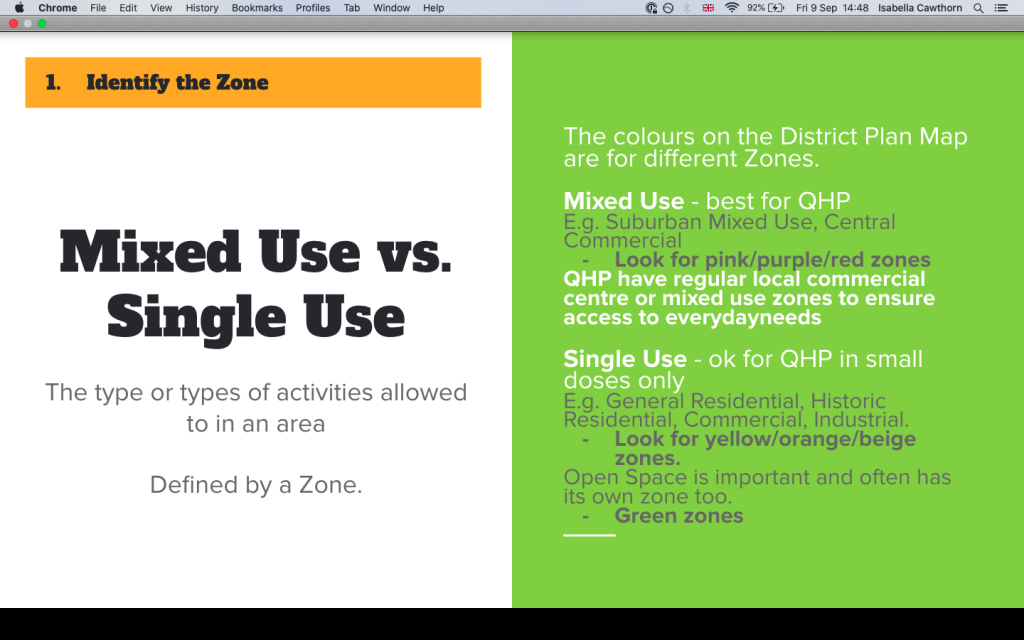
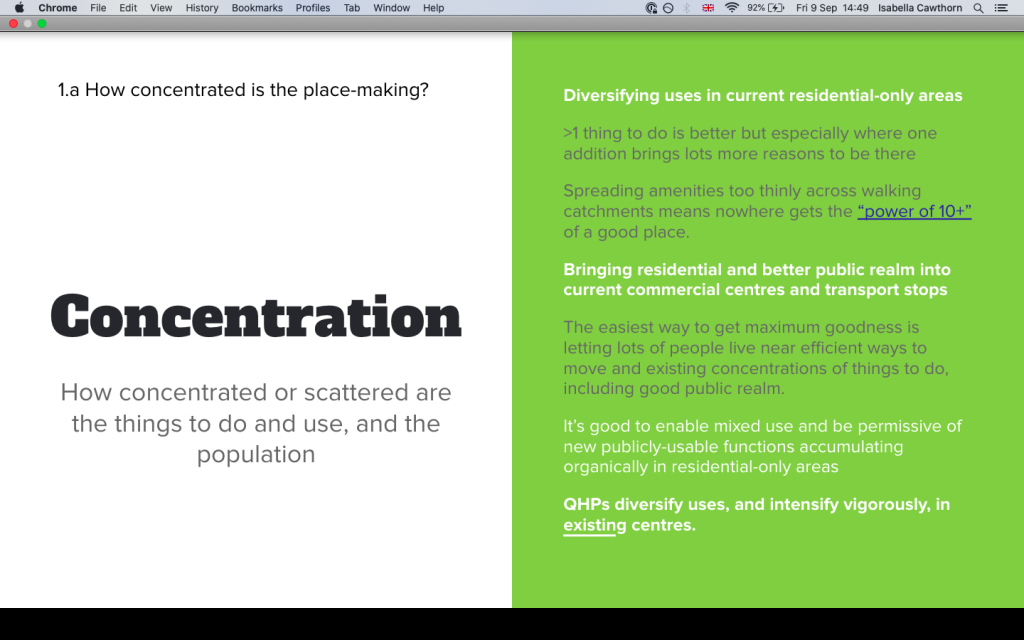
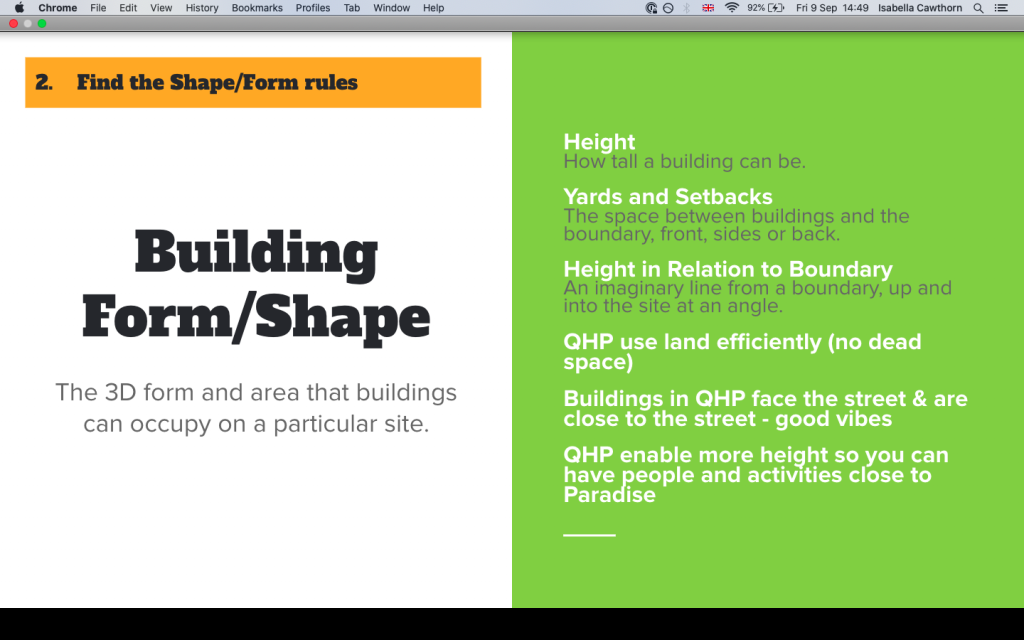
See the Coalition for More Homes’ link at the bottom for the logic on setbacks 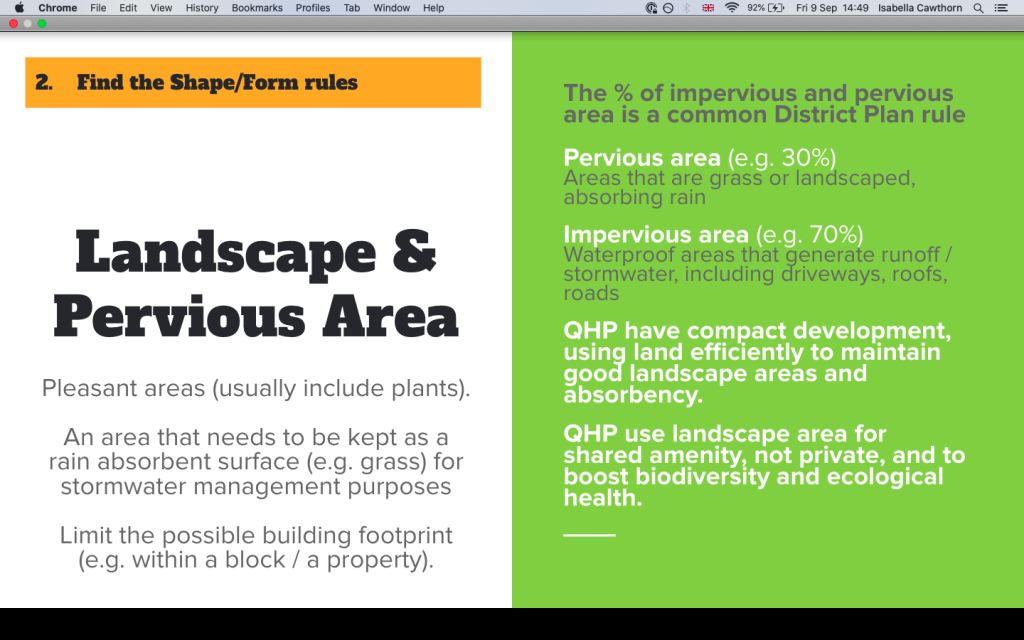
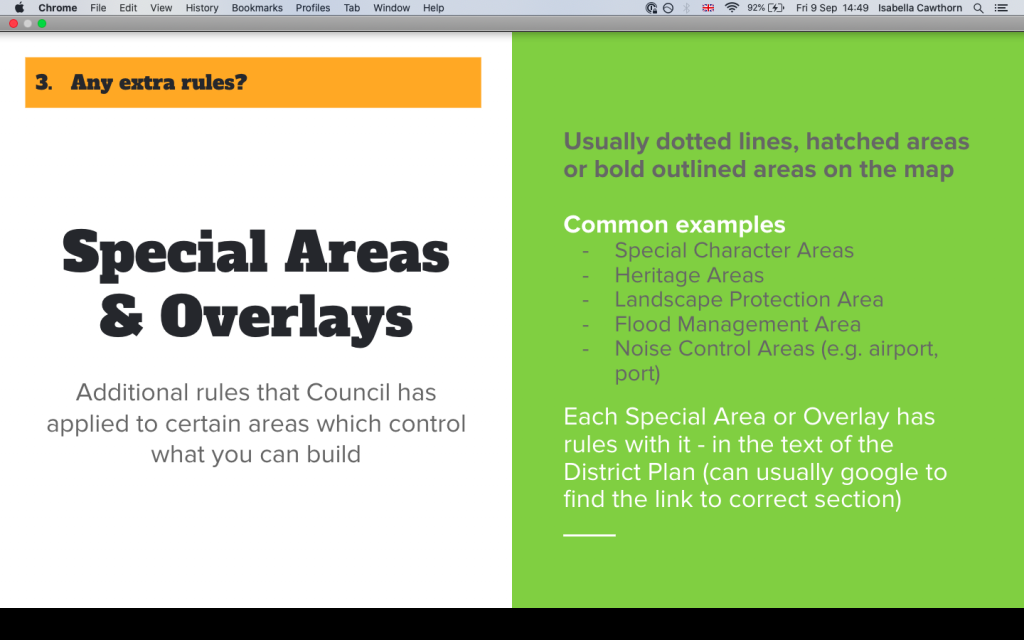
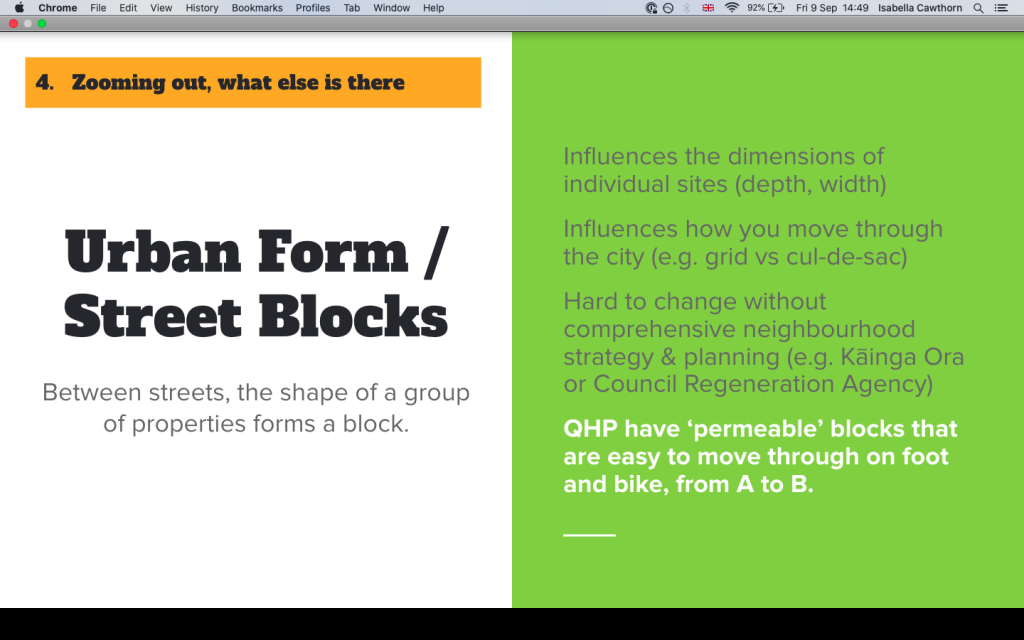

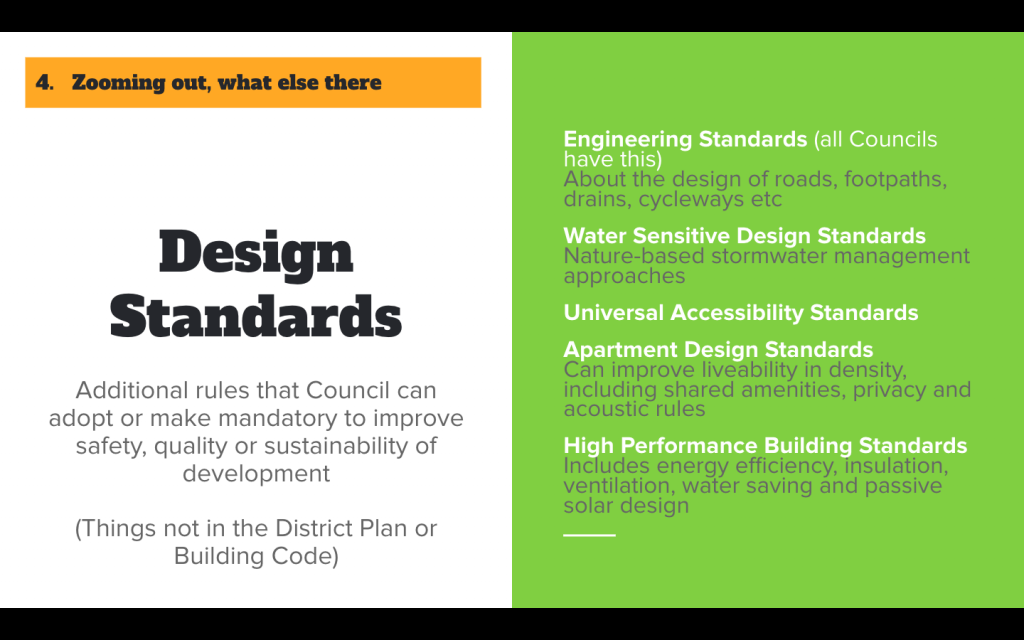
Thanks to the Coalition for More Homes for this great guidance!
Write your own submission with this stuff.
Top tip: you don’t have to find chapter and verse to fill in all the boxes on the submission form. The poor souls processing everyone’s submissions find their work easier when people do, but they’re professionals: they’ll do right by your material anyway.
Remember, you’re just a citizen. If you’re doing a rich, nerdy submission you’re already doing exceptionally well – so just try to be clear about what changes you want to see.
A fuller submission (a Porirua example) with the whys and wherefores behind the above: word doc here.
WHAT A CHAMPION YOU ARE!

Background / further reading:
- Coalition for More Homes – their EXCELLENT Alternative Medium-Density Residential Standards (definitely need to boost these, and they have great pictures!)
- Generation Zero – Wellington City PDP submission (prepared by RMA lawyer)
- A City for People – Wellington City PDP submission guide
Leave a comment